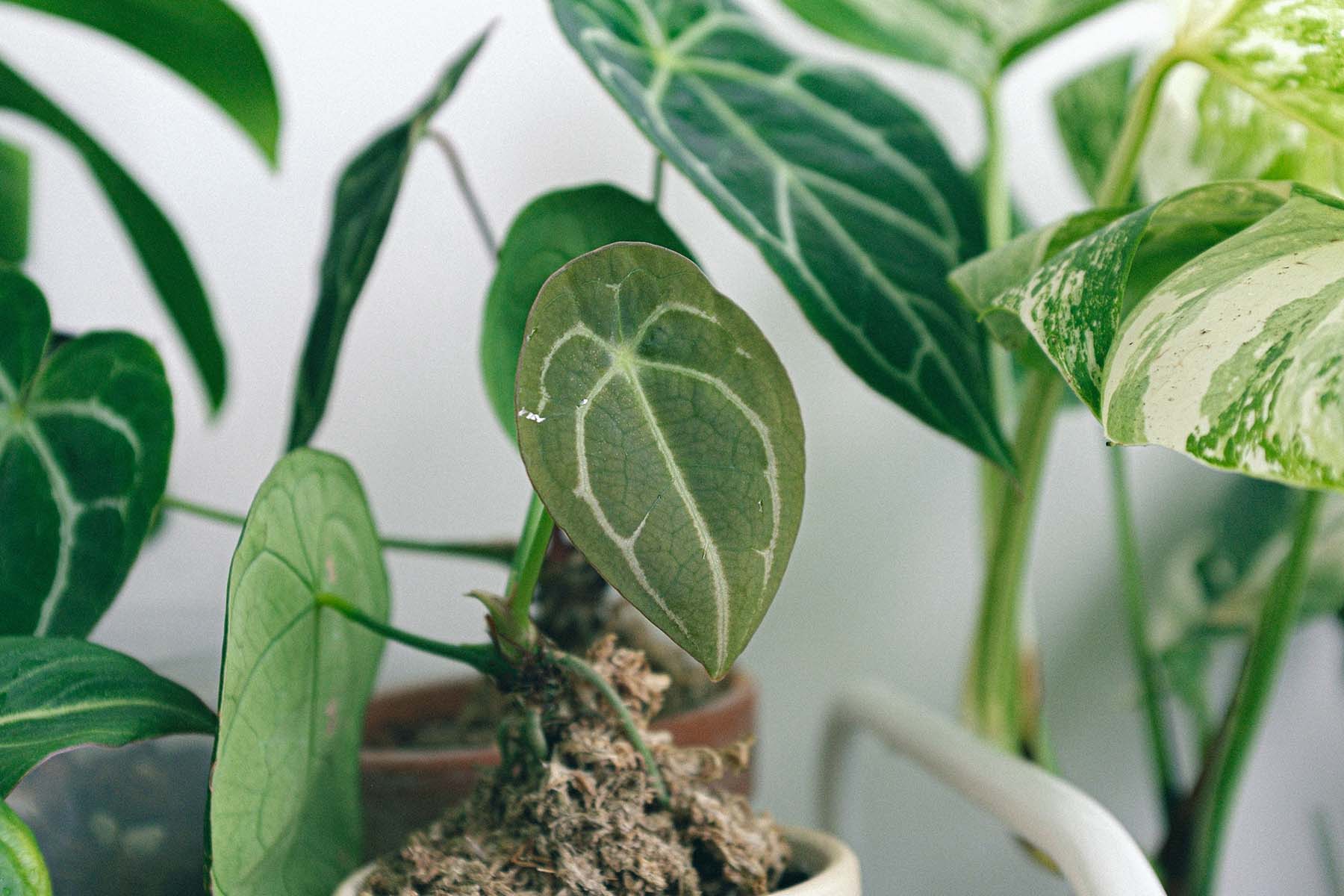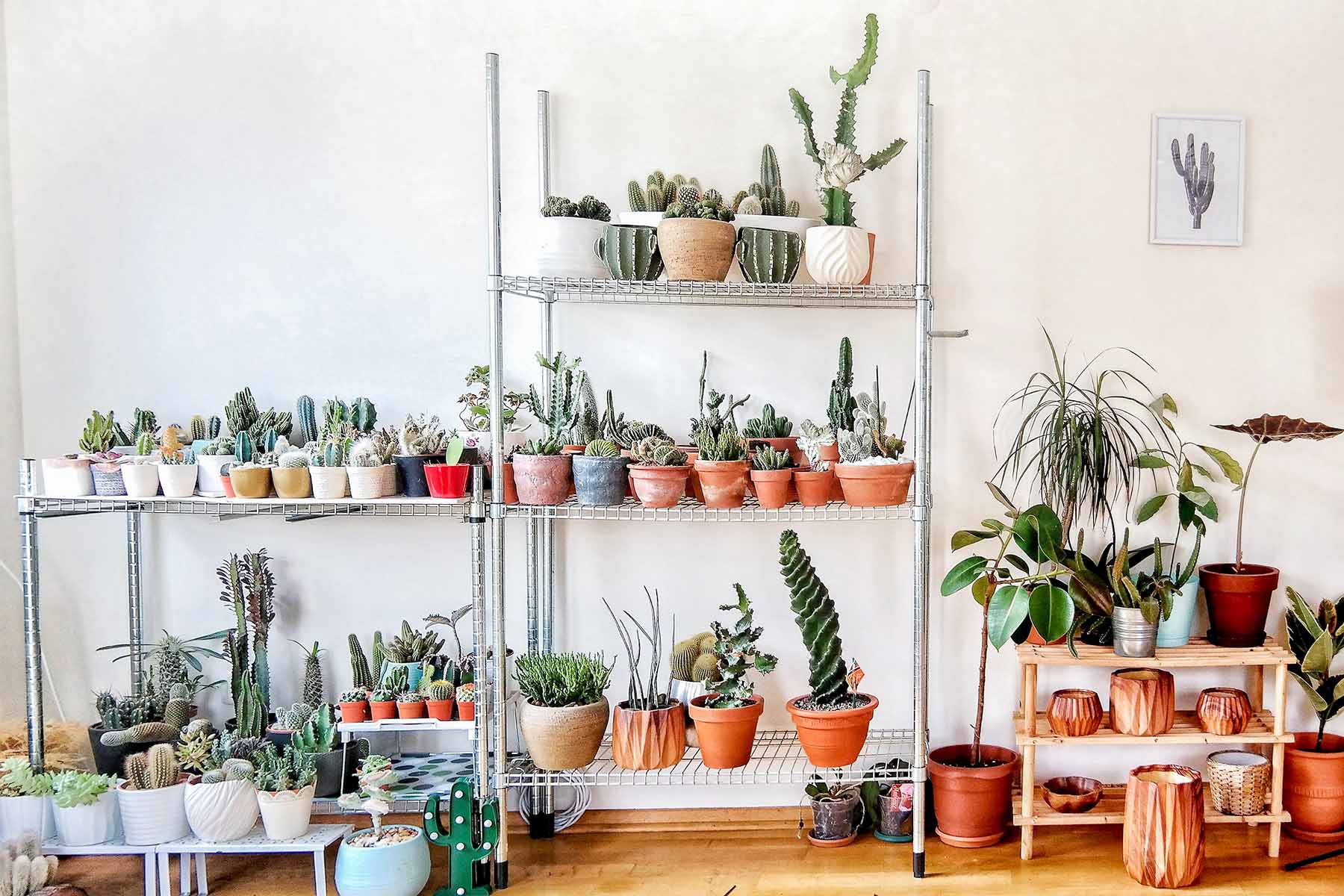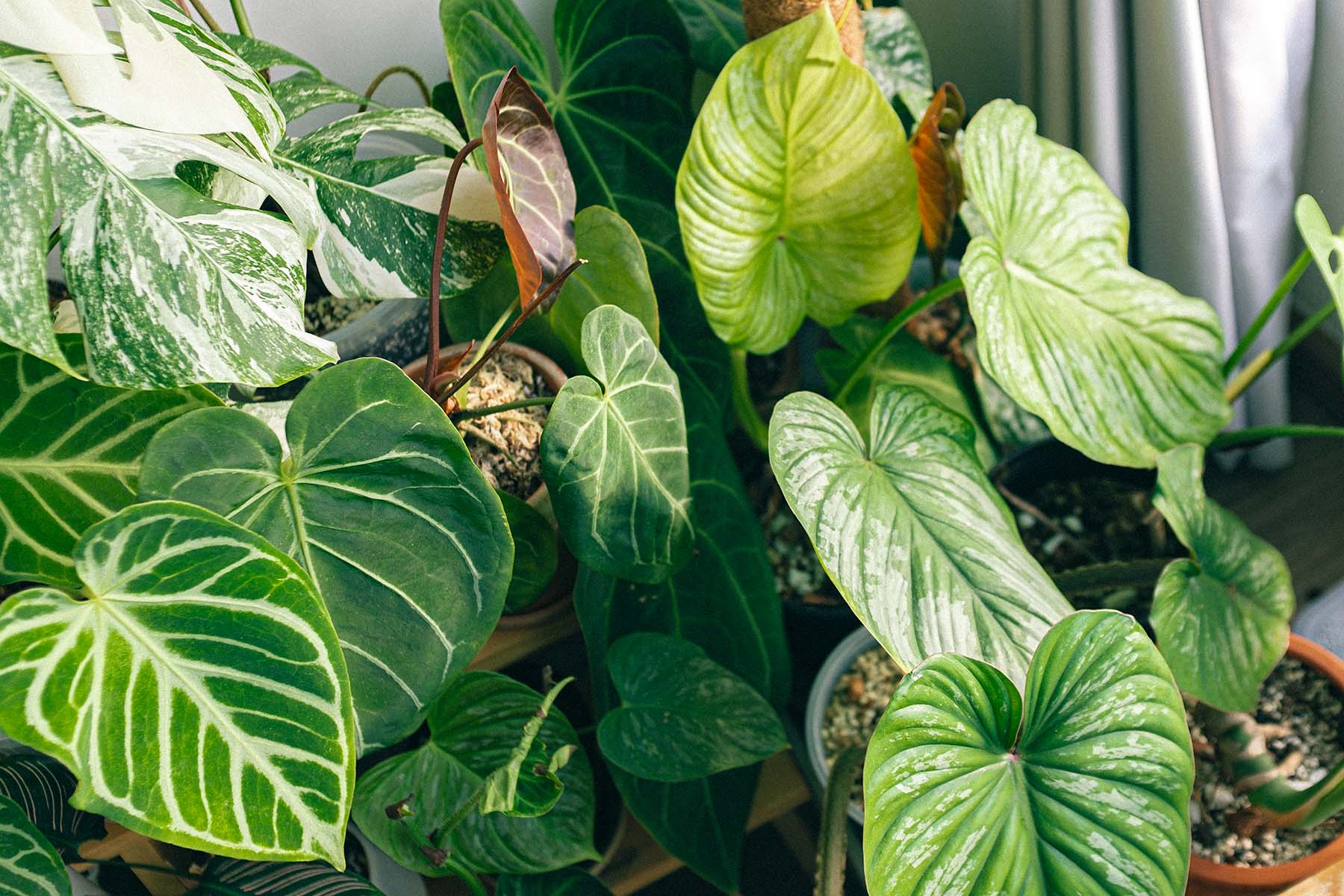
No Plant is an Island: Navigating the World of Pests in Indoor Gardening
Welcome to the interconnected world of plants, where each living organism plays a role in the grand scheme of nature. In this vibrant ecosystem, pests are as much a part of the process as the sunlight, water, and soil that nourish your plants. They all come together, creating a balance that allows life to flourish.
However, many houseplant enthusiasts start their plant-parenting journey with an ideal image of a perfect, pest-free plant. It's an understandable desire; after all, who wouldn't want their green companions to be in their best possible health? But let's not forget - no plant is an island. Just as we humans coexist with countless microorganisms, plants, too, share their environment with various small creatures. This coexistence isn't always detrimental. With a keen eye and regular care, you can manage your plant's health and keep any unwelcome guests under control.
Join us as we delve deeper into understanding the natural relationship between your plants and pests and how to create a harmonious environment that promotes healthy growth. Remember, understanding is the first step in nurturing your green friends. Let's embark on this enlightening journey together.
Understanding Pests in Your Indoor Plants
When we bring plants into our homes, we’re inviting a piece of nature into our living spaces. And nature, as we know, is a complex ecosystem teeming with various organisms. Among these organisms are pests, tiny creatures that, despite their diminutive size, can cause significant stress for plant parents.

Why Pests are a Part of the Plant Ecosystem
It's crucial to remember that pests are a part of the broader ecosystem. In the great outdoors, they serve a purpose: to keep plant populations in check and to contribute to the cycle of life and death that drives all ecosystems. But what happens when we take a plant, with all its minute inhabitants, and place it in the carefully controlled environment of our homes?
Pests, free from the constraints of predators and harsh weather, can thrive. This doesn’t mean your plants are unhealthy; it simply means they are part of the wider circle of life.
Common Types of Pests in Indoor Plants
There are several types of pests that are common to indoor plants. Each brings its own unique challenges and requires specific approaches for effective management.
- Spider mites are tiny arachnids that feed on the underside of leaves. They're notoriously hard to get rid of due to their minuscule size, but we've got some tips on how to deal with spider mites effectively.
- Whiteflies, which can often be mistaken for tiny moths, are another common nuisance. Discover how to tackle a whitefly infestation in our detailed guide.
- The most non-bug looking pest of them all, Scales, can easily go unnoticed due to their strange appearance. Learn more about how to identify and deal with scales in your indoor plants.
- Thrips can also pose a significant problem for houseplant enthusiasts. While managing their population can be tricky, we have some strategies on how to handle thrips effectively.
- One of the most hideous of all houseplant pests, Mealybugs, can be difficult to control. Check out our blog on how to combat mealybugs for some expert advice.
- Finally, Fungus gnats, often mistaken for fruit flies, are another pest you might encounter in your houseplant journey. Read our comprehensive guide on how to deal with fungus gnats for more information.
- Centipedes and millipedes can also pop up in your houseplants. Although these creepy crawlers might be a bit unsettling, they can be managed effectively. Find out how to deal with centipedes and millipedes in our informative blog.
While these pests can indeed cause harm if their populations are left unchecked, their presence is not a sign of failure. Instead, it's a sign that your indoor plants are part of a larger ecosystem. The key is not to eliminate these pests entirely, but to manage them effectively – a topic we will explore in the following sections.
How We Keep Your Plants Healthy
When you bring home a plant from JOMO Studio, you can trust that you're receiving a healthy, nurtured, and well-cared-for green companion. We want to ensure you have the best start with your new plant, and that includes our dedicated approach to pest control.
Our Pest-Control Measures
Our team at JOMO Studio is committed to delivering plants that are as healthy as possible. Upon their arrival at our facility, all plants go through an initial comprehensive check. This allows us to identify and reject any plants that show signs of pests or disease, ensuring that only healthy plants make it through this initial stage.
But our commitment to the health of your plant doesn't stop there. After the initial check, we conduct a preventative treatment on all our plants. This proactive measure helps to further minimize the risk of pests and boosts the overall health and resistance of each plant.
Multiple Checks for Optimal Health
Prior to shipping, we carry out a final check to ensure that your new plant friend is ready to thrive in its new home. This meticulous inspection routine, combined with our preventative treatments, helps to keep the pests at bay, but it doesn't guarantee a 100% pest-free state - as you now understand, no plant can promise that.
What we can promise, however, is a plant that has been given the best care possible, which includes the tools to deal with the natural occurrence of pests. Our goal is to provide you with a plant that can flourish in your care and become a resilient part of your indoor jungle.
Expectation vs. Reality: Managing Pests in Houseplants
Embarking on your plant parenting journey brings with it a spectrum of experiences, learning, and a touch of the unexpected. One such aspect involves understanding and accepting the natural existence of pests.
Having a plant at home doesn't mean aiming for a sterile, pest-free environment - that's neither realistic nor natural. Instead, the focus should be on creating and maintaining a balanced ecosystem where your plant can thrive. This perspective shift is crucial. It acknowledges that pests are a part of this ecosystem and their existence doesn't necessarily spell disaster for your beloved plants.
Detecting pests early is key to managing them effectively. Regular inspection of your plants is a simple but powerful tool in your plant care kit. Looking out for any changes in the leaf colour, unusual spots, or signs of pests will help catch any potential issues before they become significant problems.
Couple this with good plant care habits such as watering correctly, providing the right amount of light, and maintaining proper humidity levels. All these contribute to a healthy plant that's less susceptible to pest invasions.
Remember, your journey with houseplants is less about striving for perfection and more about embracing the natural fluctuations and finding joy in the learning process. Your consistent care and attention are what truly make a difference in the life of your indoor green companions.

Tips for Quarantine and Ongoing Care of Your New Plants
When you introduce new members to your indoor jungle, a key step is often overlooked: plant quarantine. Quarantine is not about suspecting every new plant to be a pest carrier but about taking preventive steps to ensure your existing collection stays healthy.
The How and Why of Plant Quarantine
Quarantine simply means keeping your new plants separate from your existing ones for a certain period—usually a couple of weeks. This is to monitor and ensure any unnoticed pests in the new plant do not get a chance to invade your other plants.
Begin with a thorough check of the new plant. Look under the leaves, along the stems, and check the soil. While we have already performed these checks before sending out the plant, it's always a good practice for plant owners too.
Place the new plant in a separate location where it can get its light and water requirements but is not in close proximity to your other plants. Continue to observe it over the next few weeks for any signs of pests or disease.
Regular Care for Early Detection and Management
Regular care and observation are the most effective ways to detect any pest issue early and keep it in check. Here are some tips:
- Consistent Observation: Make it a habit to check your plants during your regular care routine. Look for changes in leaf colour or texture, spots, or tiny movements on the plant that might suggest the presence of pests.
- Cleanliness: Keeping your plant and its surroundings clean can prevent many pest issues. This includes removing dead leaves and debris, which can become breeding grounds for pests. And use a neem oil based foliage spray would help shine the leaves and prevent pests.
- Proper Watering and Light: Plants that are properly watered and receive the right amount of light are less likely to succumb to pest infestations. Overwatering, in particular, can attract pests like fungus gnats.
- Balanced Fertilization: Over-fertilization can lead to lush, soft growth that is very attractive to pests. A plant that is fed just right will be healthier and better equipped to fend off any pests. Using an organic liquid plant food as part of your watering routine will make your plants happy and it's easy to do.
Remember, occasional pests are part of the plant journey. Rather than panicking, equip yourself with the knowledge and skills to tackle them early and effectively. Healthy plants are better able to resist and recover from pest infestations, so your primary focus should always be on good plant care.
Frequently Asked Questions About Pests in Houseplants
As we embark on our plant parenting journey, it's natural to have questions and concerns about pests. Here, we've compiled answers to some of the most common questions.
What are the signs of a pest infestation?
Signs of a pest infestation can vary based on the type of pest, but some common indications include:
- Yellowing, curling, or wilting leaves.
- Tiny spots or stippling on the leaves.
- A sticky residue on the plant or surrounding surfaces, often accompanied by a black sooty mold.
- Visible insects or their larvae on the plant.
- Webbing on the plant, particularly on the undersides of leaves or in leaf axils.
For more detailed signs related to specific pests, check out our blogs on common houseplant pests.
How can I prevent pests in my plants?
Preventing pests in houseplants is largely about good plant care and regular observation. Here are some tips:
- Ensure your plants get the right amount of light and water.
- Keep your plants and their surroundings clean. Remove any dead leaves or debris promptly.
- Avoid over-fertilizing your plants, as this can lead to soft growth that attracts pests.
- Quarantine any new plants for a couple of weeks before introducing them to your existing plant collection.
- Regularly inspect your plants for early signs of pests.
Remember, the presence of pests doesn't mean you're a bad plant parent. Even the healthiest plants can get pests. The key is to catch them early and act promptly.
What We Learnt from Plants
As we wrap up our discussion on the interconnected world of plants and pests, let's remember that growing indoor plants is a holistic experience, pests included. Encountering a few bugs along the way doesn't mean you're doing anything wrong; rather, it's a part of the journey that can teach us patience, attentiveness, and the resilience of nature.
The most valuable takeaway we hope you've gained from this exploration is the significance of regular care and attention in creating a healthy environment for your plants. By becoming mindful observers of our leafy companions, we not only detect early signs of pests, but also form a deeper, more fulfilling connection with these living beings.
Embrace the full spectrum of plant parenthood, accept its challenges and joys, and remember that every challenge is an opportunity to learn and grow. Because, just like us, no plant is an island; they too are a part of a beautifully complex ecosystem that requires balance and care to thrive.






